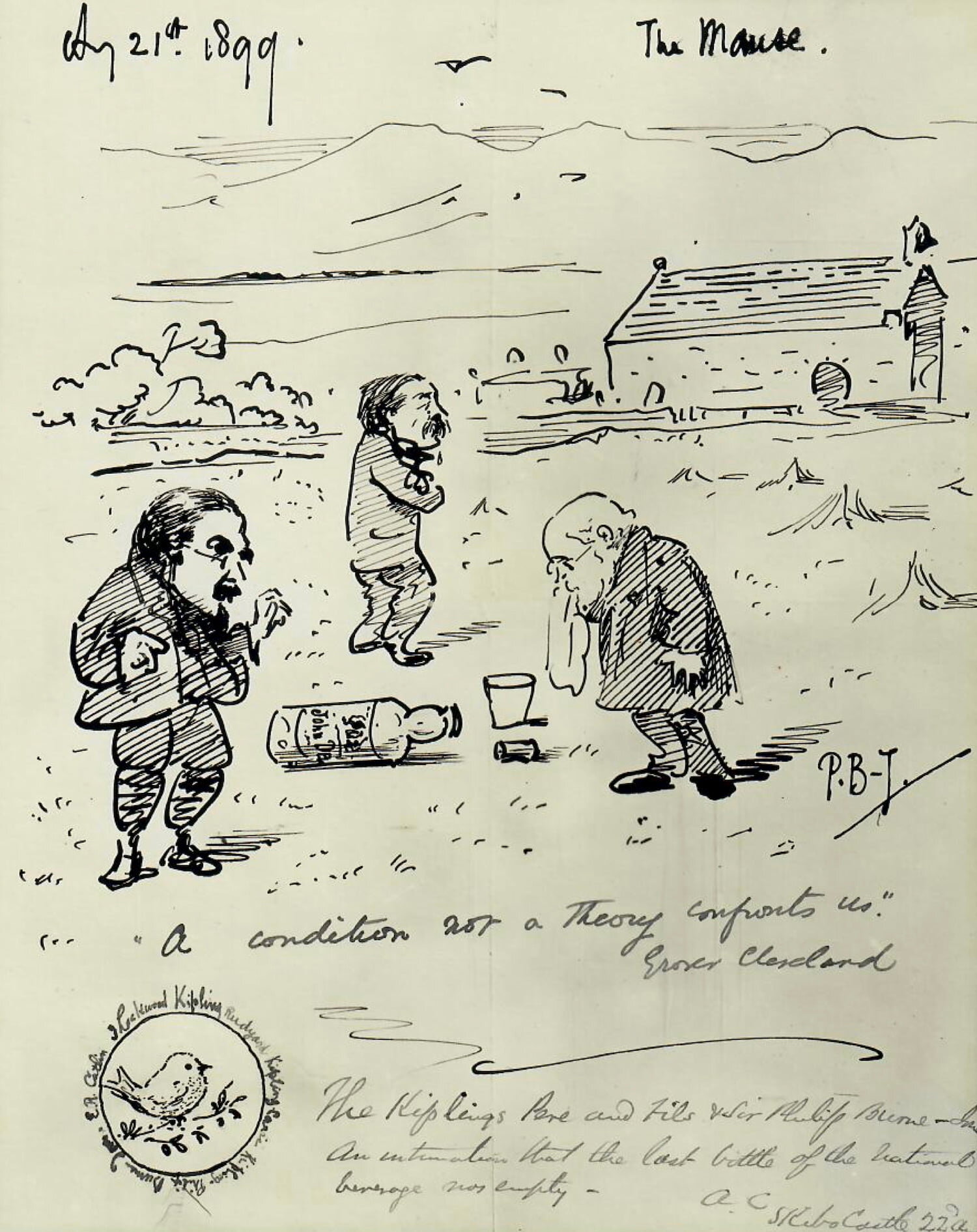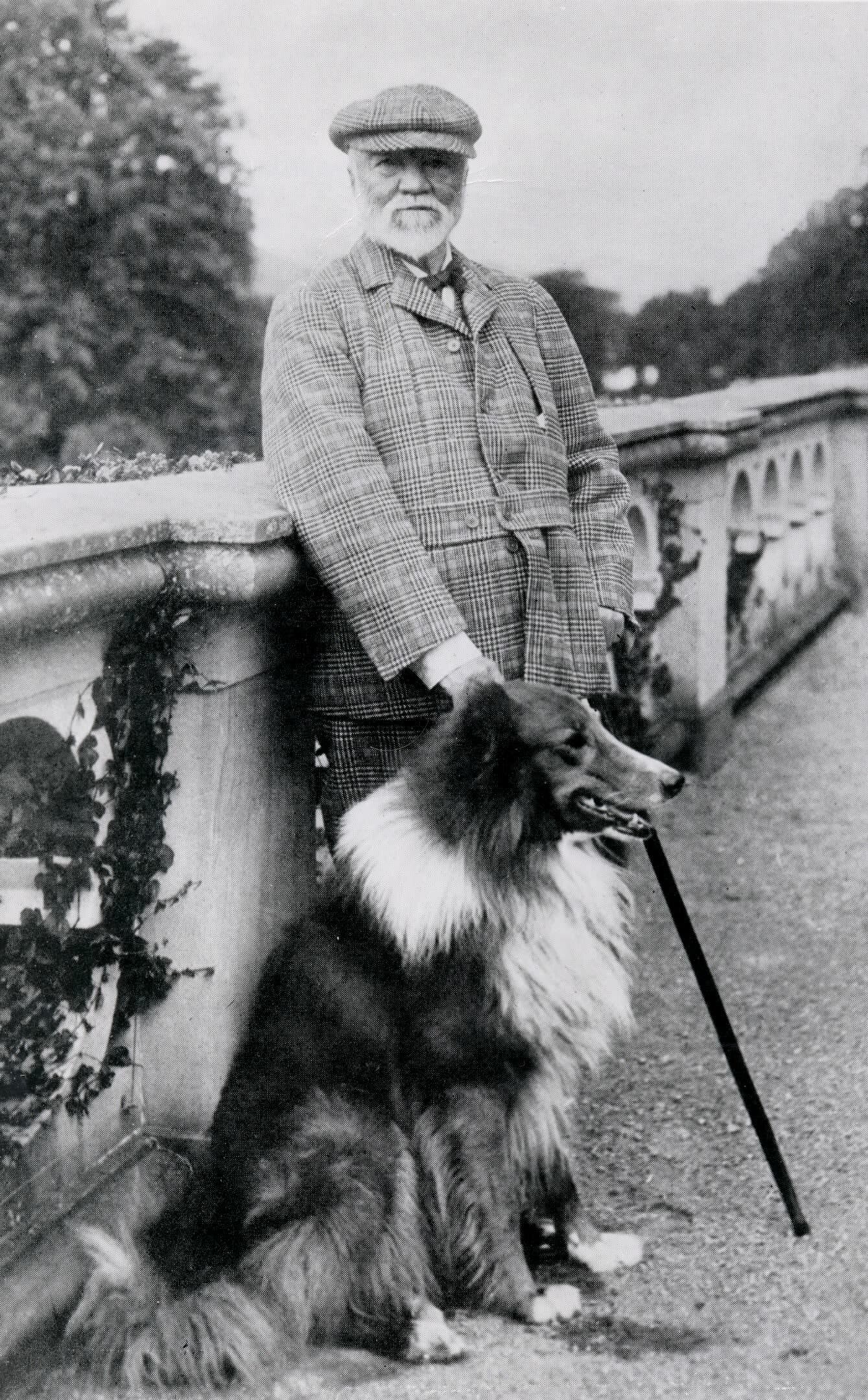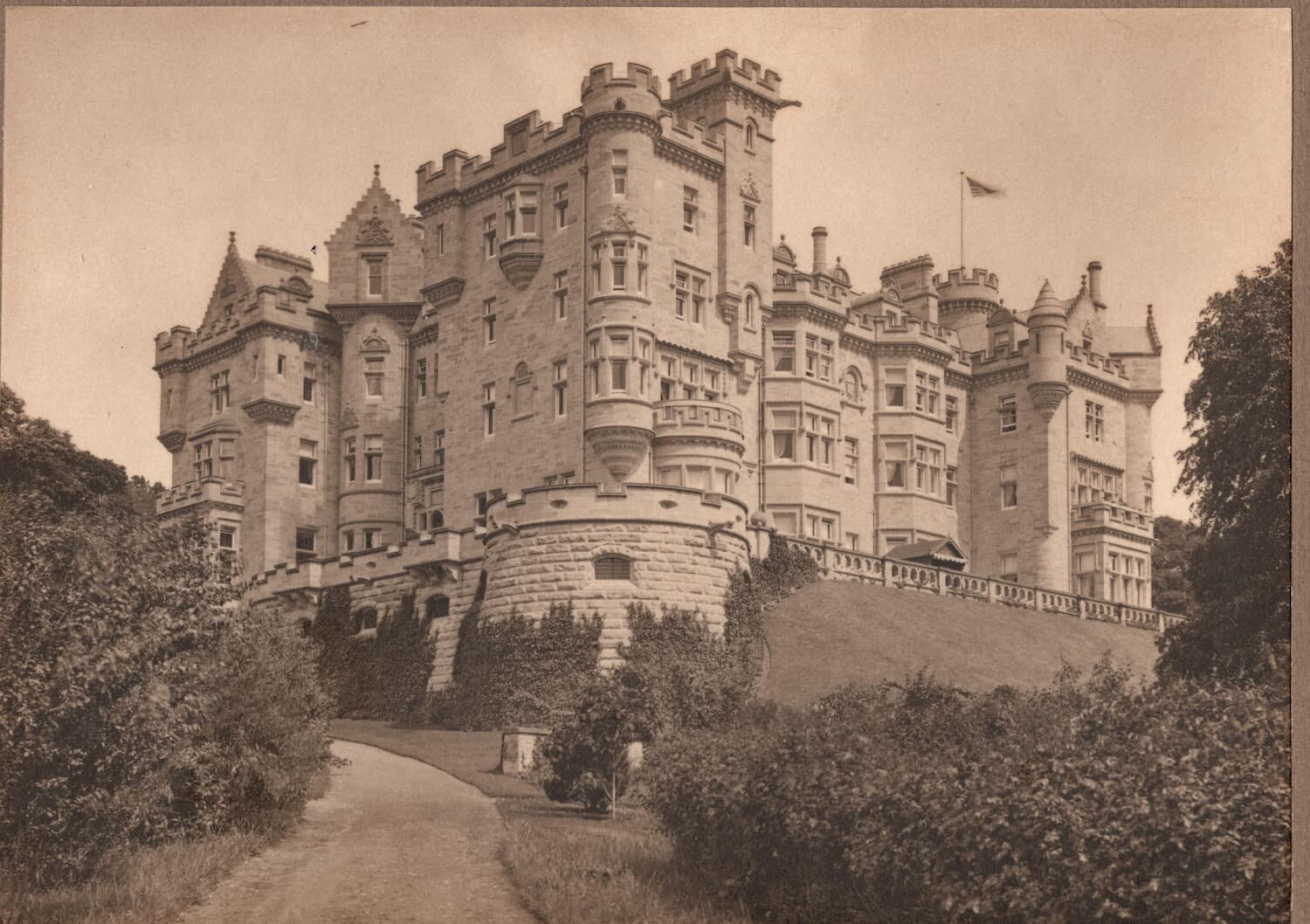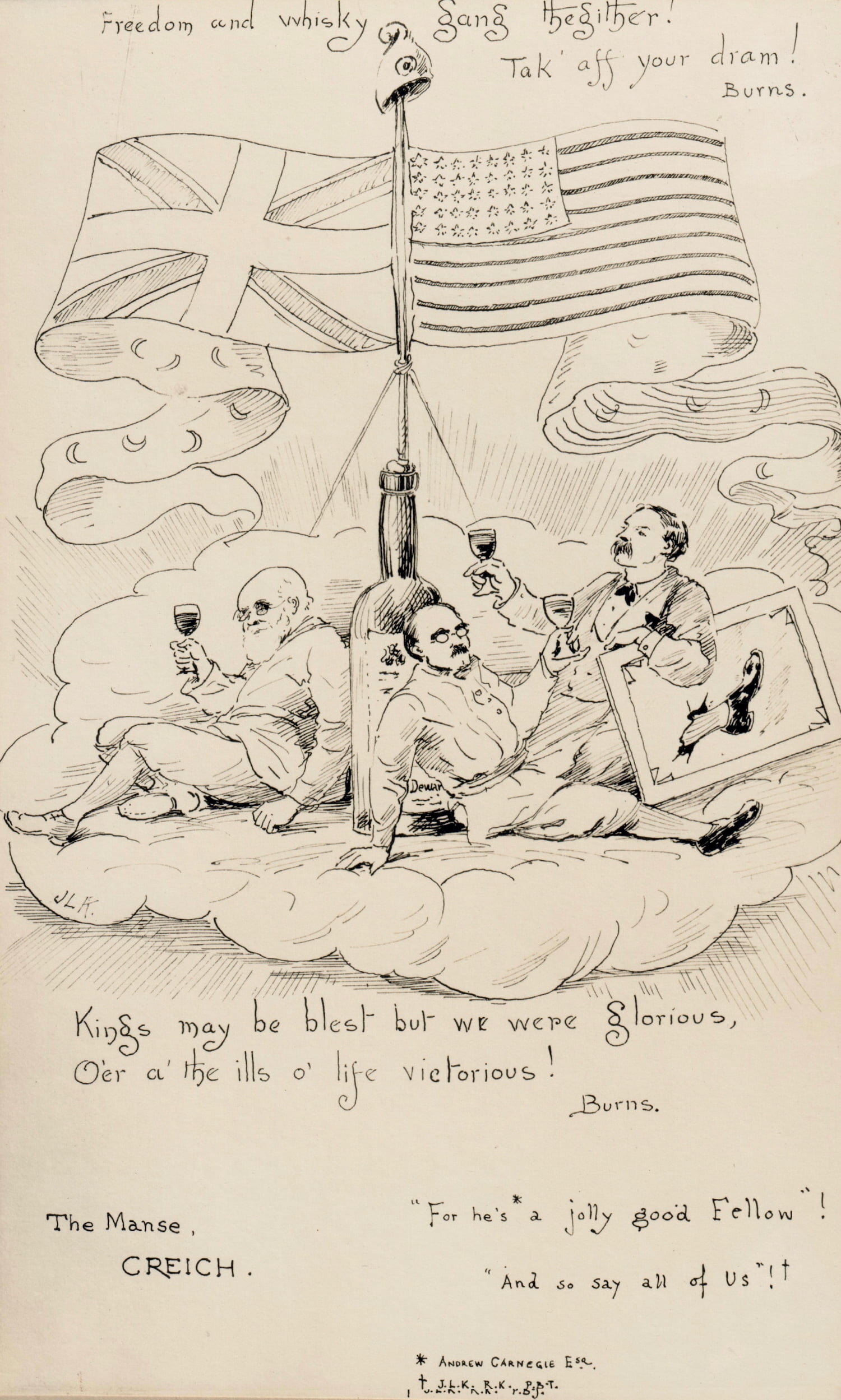In honour of World Whisky Day today we thought we would celebrate with a blog post all about Andrew Carnegie’s relationship with Scotch, as well as some contributions from our Museum Team who will be sharing their favourite tipples!*
Andrew and Whisky
Andrew Carnegie was not a drinker of beer or wine, but enjoyed half a glass of ‘very best Scotch’ whisky at lunch and dinner as prescribed by his doctor. Carnegie’s favourite whisky distillery was John Dewar & Sons and they still have a distillery based up in Aberfeldy, Perthshire.
Although Carnegie supported the temperance movement, he often gifted casks of whisky to various dignitaries and people of note (the practice of drinking alcohol for health reasons was quite common in Victorian and Edwardian Era!). One such recipient of Carnegie’s casks was the American writer Samuel Langhorne Clemens, also known as the one and only Mark Twain. In the early 1900s, when Carnegie learned of Twain’s love of Scottish whisky, he began to send him some.
Twain responded with witty thank you letters, once writing to Carnegie:
“‘Your whisky came at the right time. Of course, your whisky never comes at the wrong time.’”
Another tale of Andrew and his whisky involves Rudyard Kipling, author of the Jungle Book. In the summer of 1899, Rudyard Kipling was staying at the Old Manse near Dornoch, only a few miles away from Andrew Carnegie’s Highland property, Skibo Castle.
Kipling was holed up with his father and the painter Sir Philip Burne-Jones when they finished their last precious bottle of whisky. Burne-Jones decided to send a letter to Andrew Carnegie who was staying at Skibo at the time. This included a small ink sketch depicting the three men mourning their last bottle of whisky! Carnegie, the benefactor that he was, sent the men a cask of whisky from Skibo. Instead of a sad cartoon like before Carnegie this time received another ink drawing celebrating his generous gift.



Annie, Visitor Services Officer
“On the whisky drinking scale, I am almost certainly at the beginner’s end. Despite living
with a whisky-loving Scotsman, I have only really tried whisky in its Hot Toddy format - in other words, diluted to within an inch of its life. However, I have recently discovered that using whisky in my cooking is a more accessible way for beginning to explore whisky’s flavours and versatility. Think of how often we use wine in our cooking to add richness and depth – why not whisky for a change?
One of my favourite Youtubers is Gabie Kook, a South Korean chef who was once runner up
for MasterChef back in 2014. Recently she has uploaded a sponsored series in partnership with Singleton whisky. Her recipes include a crowd-pleasing Salmon Wellington fit for a feast, paired with a creamy whisky sauce. For a simpler supper, she has also developed a creamy salmon, dill and whisky laced pasta dish. I have tried and tested the latter dish and all I can say it was delicious. Once normality has been restored worldwide, I’m sure this will be added to my regular rotation of midweek dinners!”
Helen, Museum Assistant
“Ahh, whisky. I do love the stuff, but it does not seem to love me back. Tends to bring on a crashing headache, and can put me in a melancholy frame of mind.
I favour the Islay malts myself, and feel you can't go wrong with any of those. I think my favourite would be Lagavulin. My dad schooled me well in this area from a young (though probably at least mostly legal) age. I've not got much time for blends, but an acceptable use for them is in cocktails, my favourite being the ‘Whisky Mac’. To make this you need 1
measure whisky and 1 measure ginger wine (or ginger beer if you can’t find wine) stirred over ice. It’s very refreshing, and the only time ice should ever go near whisky!”
Image: souvenir whisky glass available in our museum shop.
Visiting the museum later in the year?
Looking for the perfect gift for the Scotch aficionado in your life?
Well did you know that we sell a personalised whisky or Scotch glass in our shop, adorned with the cottage in which Andrew was born in 1835. This glass was commissioned specially for centenary of Andrew’s death in 1919 and produced by Glencairn crystal, who specialize in traditional drinking vessels. Raymond Davidson, who derived the shape from the traditional nosing copitas used in distilleries, designed the original Glencairn Whisky glass.
We hope you enjoyed our whisky blog, leave us your recommendations in the comments below.
* Please note the Andrew Carnegie Birthplace Museum does not condone excessive drinking. Please drink responsibly and with moderation.









